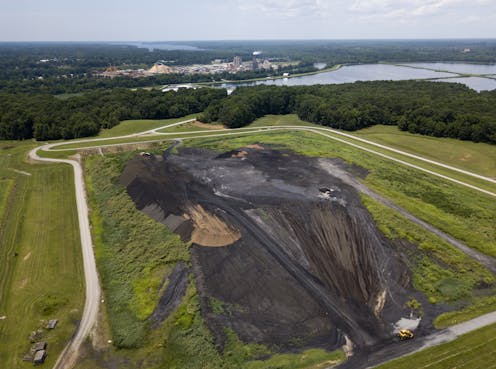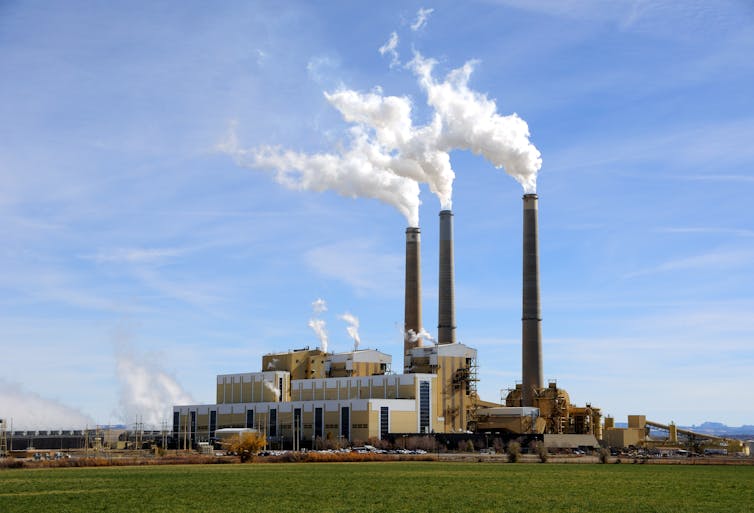Could coal ash be a viable source of rare-earth metals?
Questions about supplies of rare-earth elements, crucial in high-tech devices, pushed researchers to look to industrial waste for new sources of the key materials.

Rare-earth elements, including neodymium and yttrium, are not actually rare – more common, in fact, in the Earth’s crust than copper and tin. But, because they are scattered widely, and hard to separate from their surrounding ores, mining and refining them is difficult.
Rare earths are valuable, too. They have unique properties that make them useful in modern energy and electronic products. Electric vehicles and wind turbines need high-performance electric motors and generators, which in turn require strong magnets made of neodymium and dysprosium. Yttrium, terbium and europium are key to energy-efficient color displays on laptop, cellphone and TV screens. Lanthanum is crucial to high-quality camera lenses, and cerium acts as a catalyst in automotive catalytic converters. Researchers are looking for alternatives and substitutes, but it’s not clear there are any.
Most rare earths – 85 percent of the world’s supply – are produced in China. The last U.S. rare-earth mine closed in 2015, leaving the country dependent on imports – and vulnerable when, as happened in 2010, China stopped all rare-earth exports in a trade conflict.
The fact that a trade war could again cut off rare-earth supplies has prompted some people to consider reopening U.S. mines. But our research has identified another possibility: extracting rare earths from coal ash, an abundant waste product with relatively high concentrations of these key elements.
Coal ash as a source
As a byproduct of burning coal to make electricity, the U.S. produces nearly 80 million tons of coal ash a year. About 43 percent of that is used as an ingredient in cement and to enrich soil with macro- and micronutrients. The rest goes to landfills or gets mixed with water and stored in open ground pits called containment ponds.
That coal ash contains reasonable amounts of rare earths, particularly scandium and neodymium. In ash from some types of coal, the concentrations of rare earths are as much as 100 times higher than when they’re found naturally in the Earth’s crust.

Research, funded in part by government money, has found at least three ways to extract rare earths from coal ash, though none is yet commercially viable. The first two methods, using acids and special bacteria, are either too expensive or too time-consuming and therefore unlikely to be practical at an industrial scale.
A third route, which our research explores, uses heated, compressed carbon dioxide to selectively dissolve and extract the rare-earth elements. This form of carbon dioxide, called “supercritical,” has several applications, including in the food industry, removing caffeine from coffee beans.
Using carbon dioxide
Our research has found a potential route to profitability for extracting rare earths from coal ash using supercritical carbon dioxide. There are still significant challenges, though.
First, the process needs other chemicals. Carbon dioxide is relatively cheap, but it can’t help rare earths clump together and separate from the other elements in coal ash. Doing that will likely require an expensive chemical such as tributyl phosphate. Researchers will need to find ways to use as little of that as possible to keep costs down.
Second, the process has to be especially efficient at extracting scandium and neodymium, which are particularly valuable. Many coal ashes have lots of those elements – but not all, which raises the third challenge.
Some coal sources – and therefore the ash when that coal is burned – have more rare earths than others. We found that the value of rare earths in a single ton of coal ash can vary from US$99 at a coal plant in Ohio to $534 at a West Virginia plant. With extraction costs expected to range between $380 and $1,200 per ton, not every coal plant’s ash will be a profitable place to find rare earths.
Dealing with the leftovers
After the rare earths are extracted where possible – and profitable – the rest of the coal ash would not need to be handled any differently than it is already. But it would help the coal industry take a step toward a “circular economy,” in which anything one process generates as waste can be used as a raw material in another process. Further, the carbon dioxide and other chemicals needed for rare-earth extraction can be reused, reducing waste from the process itself.
This method would give the coal industry an additional stream of income – which would not likely reverse its decline, but could give coal a different strategic role in the country’s economy, even as its use as an energy source ends.
Saptarshi Das receives funding from the National Science Foundation.
Eric Williams currently receives funding from the National Science Foundation and the Ford Motor Company. The research reported was done under a grant from the U.S. Department of Energy.
Gabrielle Gaustad receives funding from the National Science Foundation and the steel scrap industry. She also consults for The Aluminum Association and the Institute for Defense Analyses.
Read These Next
Who thinks Republicans will suffer in the 2026 midterms? Republican members of Congress
The president’s party almost always loses seats in the midterms. More than two dozen Republican House…
West Antarctica’s history of rapid melting foretells sudden shifts in continent’s ‘catastrophic’ geo
A picture of what West Antarctica looked like when its ice sheet melted in the past can offer insight…
RFK Jr. wants to scrutinize the vaccine schedule – but its safety record is already decades long
Federal officials are questioning the safety of the vaccine series children receive. Here’s the story…






